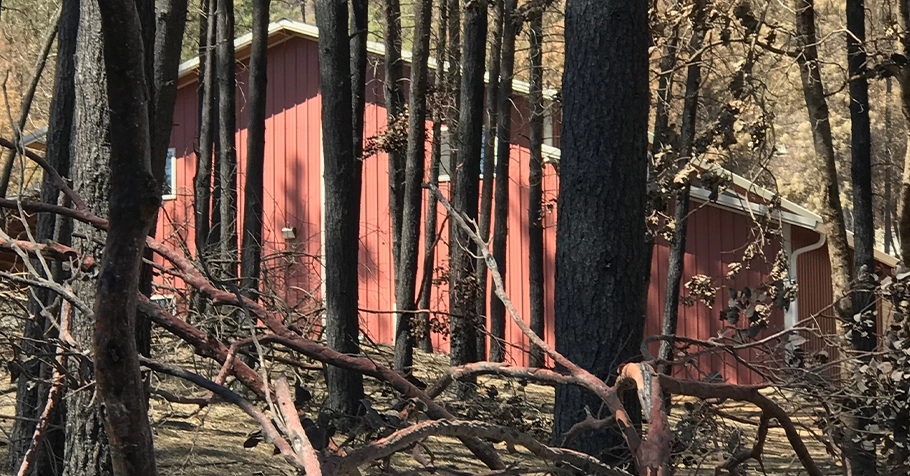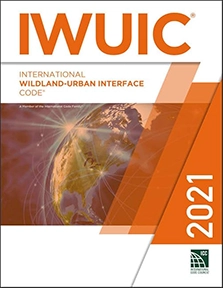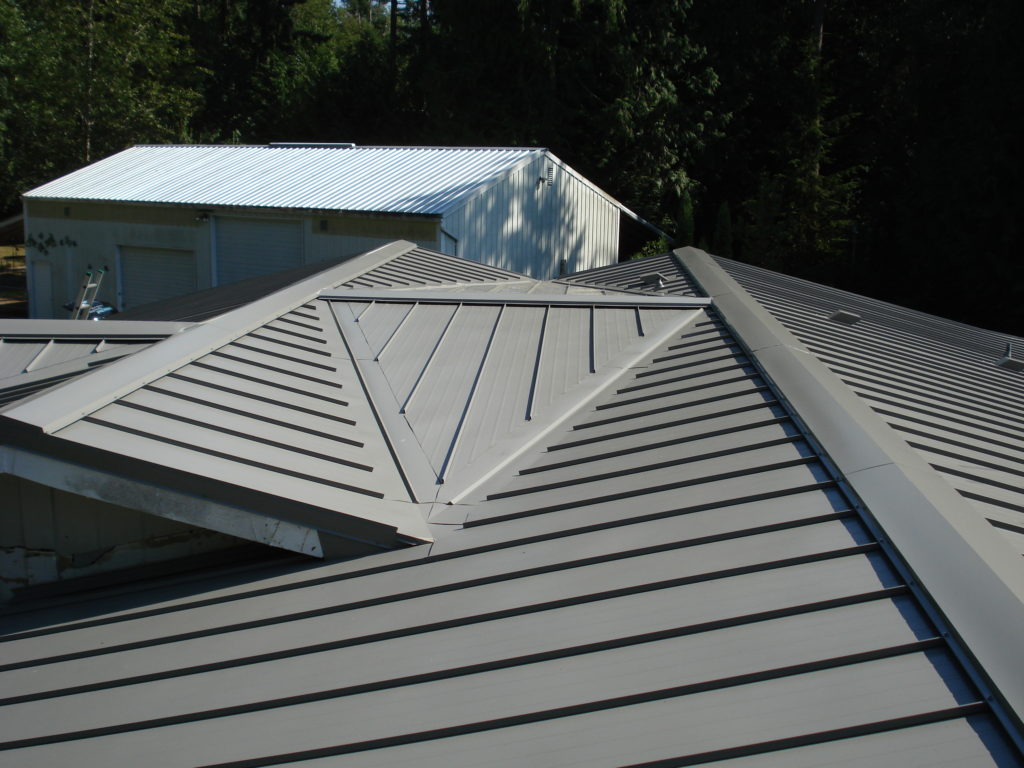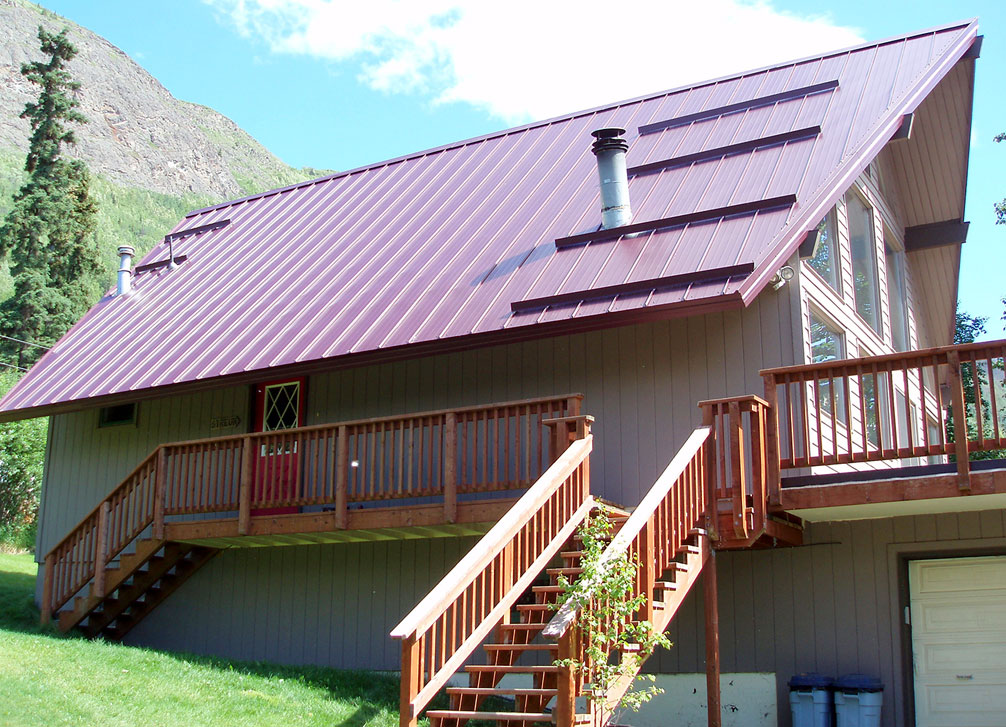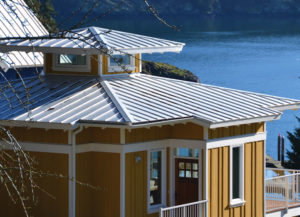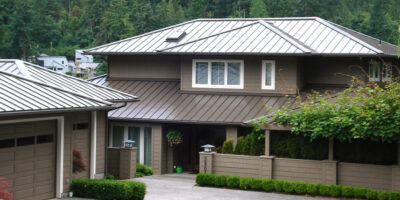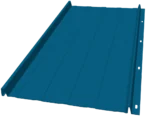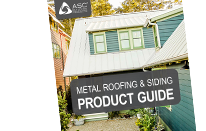Ridge Venting Requirements for Fire Prone Areas
Wildfires pose a serious risk in Wildland Urban Interface (WUI) areas, where homes are built near natural landscapes. One of the most dangerous aspects of wildfires is burning embers, which can travel miles from the main fire and ignite structures. For structures in fire-prone regions, choosing ember-resistant materials and ensuring proper venting are critical to reducing fire risks.
However, fire protection doesn’t stop at roofing material alone. Proper attic venting plays a key role in keeping homes cool and moisture-free, but unprotected vents can allow dangerous embers to enter and ignite attic materials. Code-compliant metal ridge venting solutions designed for metal roofing can significantly improve wildfire safety by reducing this risk.
Learn more about wildfire prevention strategies and the benefits of metal roofing in WUI areas by visiting our blog: Wildfire Prevention with Metal Roofing.
How Embers Threaten Ridge Vents
When embers infiltrate a structure’s attic, they can ignite insulation, wood, and other flammable materials. Rising heat naturally creates airflow through soffit and ridge vents, potentially pulling embers inside the attic space. Wind can also push embers directly into ridge vents if they are not adequately protected.
Using a code-compliant, ember-resistant ridge vent is crucial to ensure both safety and ventilation efficiency. ASC Building Products offers solutions designed specifically for these challenges, including venting systems compatible with our Skyline Roofing metal panels.
Building Codes for Wildfire-Prone Areas
Two key building codes regulate venting requirements in wildfire-prone areas: the International Wildland-Urban Interface Code (IWUIC) and California Building Code (CBC), Chapter 7A. Both establish strict standards designed to reduce the risk of ember intrusion and enhance fire protection for structures.
The California Building Code (CBC), Chapter 7A
(administered by the CA State Fire Marshal)
California Building Code Requirements for Ridge Vents
According to Chapter 7A of the California Building Code (CBC), ridge vents installed in wildfire-prone areas must meet the following criteria (CBC 706A.2.1):
- Mesh Covering: Vents must be covered with a mesh that has openings no smaller than 1/16 inch (1.6 mm) and no larger than 1/8 inch (3.2 mm).
- Noncombustible Material: The mesh material must be noncombustible.
- Corrosion Resistance: The mesh material must be resistant to corrosion.
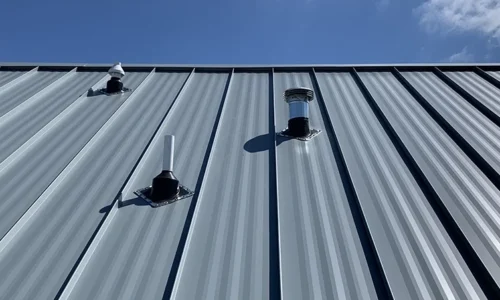
Alternatively, vents may be tested for compliance with ASTEM E2886. The IWUIC follows similar guidelines but allows openings of up to 1/4 inch.
These strict requirements limit the options available for compliant ridge vent products. Foam-based or non-metal venting systems typically do not meet these standards, making metal-based ridge vent solutions essential.
Ridge Venting with Metal Roofing Systems
Ridge venting plays an integral role in attic ventilation, especially in metal roofing systems. Products like Skyline Roofing are designed to provide both functionality and fire protection. This system features a sleek, standing seam profile that supports effective ridge ventilation while contributing to the overall aesthetic appeal and durability of the roof.
Metal roofing is inherently non-combustible, and the Skyline Roofing system holds a Class A Fire Rating when installed on non-combustible decking or framing in compliance with IBC, IRC, or UL listings (UL790). This makes Skyline Roofing an ideal choice for homes located in WUI areas, where fire protection is a critical concern.
ASC Building Products’ Ember-Resistant Ridge Venting Solutions
To help protect structures in wildfire-prone areas, ASC Building Products offers perforated metal “zee” flashings designed for vented ridges. Our ridge vent solutions are fully compatible with Skyline Roofing and meet the stringent fire safety standards required by both CBC and IWUIC.
Key features include:
- Code-Compliant Mesh: The perforated metal flashings feature a maximum hole opening size of 1/8 inch, ensuring compliance with fire safety codes.
- Noncombustible Materials: Made from durable steel, these flashings resist ember ignition and are built for long-lasting protection.
- Corrosion Resistance: The flashing features metallic-coated steel to ensure long-term performance and protection against rust and corrosion.
- Ventilation Efficiency: The flashings provide a nominal open area of 30.6%, allowing proper airflow to reduce moisture and heat buildup in the attic.
The Net Free Ventilation Area (NFVA) is crucial for optimal performance. The NFVA can vary depending on the roof’s slope and design. Our Skyline Roofing Installation Guide provides detailed information to help ensure proper ridge vent installation and ventilation balance.
Skyline Roofing: A Fire-Resistant Roofing Solution
Along with ember-resistant ridge venting, Skyline Roofing offers several benefits that enhance both fire safety and overall roof performance:
- Fire Resistance: Metal roofing is inherently noncombustible, reducing the risk of ignition from embers and direct flame exposure.
- Durability: Designed to withstand harsh weather conditions, Skyline Roofing resists damage from rain, wind, and snow.
- Energy Efficiency: Metal roofs reflect solar heat, which can help lower cooling costs and improve indoor comfort.
- Low Maintenance: Unlike other roofing materials, metal requires minimal upkeep, making it a long-term investment.
- Design Flexibility: Available in a variety of colors, Skyline Roofing enhances the curb appeal of any home while meeting functional needs.
Partnering with ASC Building Products
Protecting properties in wildfire-prone areas starts with the right materials and construction practices. ASC Building Products is committed to providing high-quality, ember-resistant solutions, from Skyline Roofing to code-compliant ridge venting systems.
By choosing our products, you can meet fire safety standards, maintain proper attic ventilation, and enjoy the long-term benefits of durable metal roofing.
Ready to learn more? Explore our products or contact ASC Building Products using the button below for expert guidance on wildfire-resistant building solutions.


